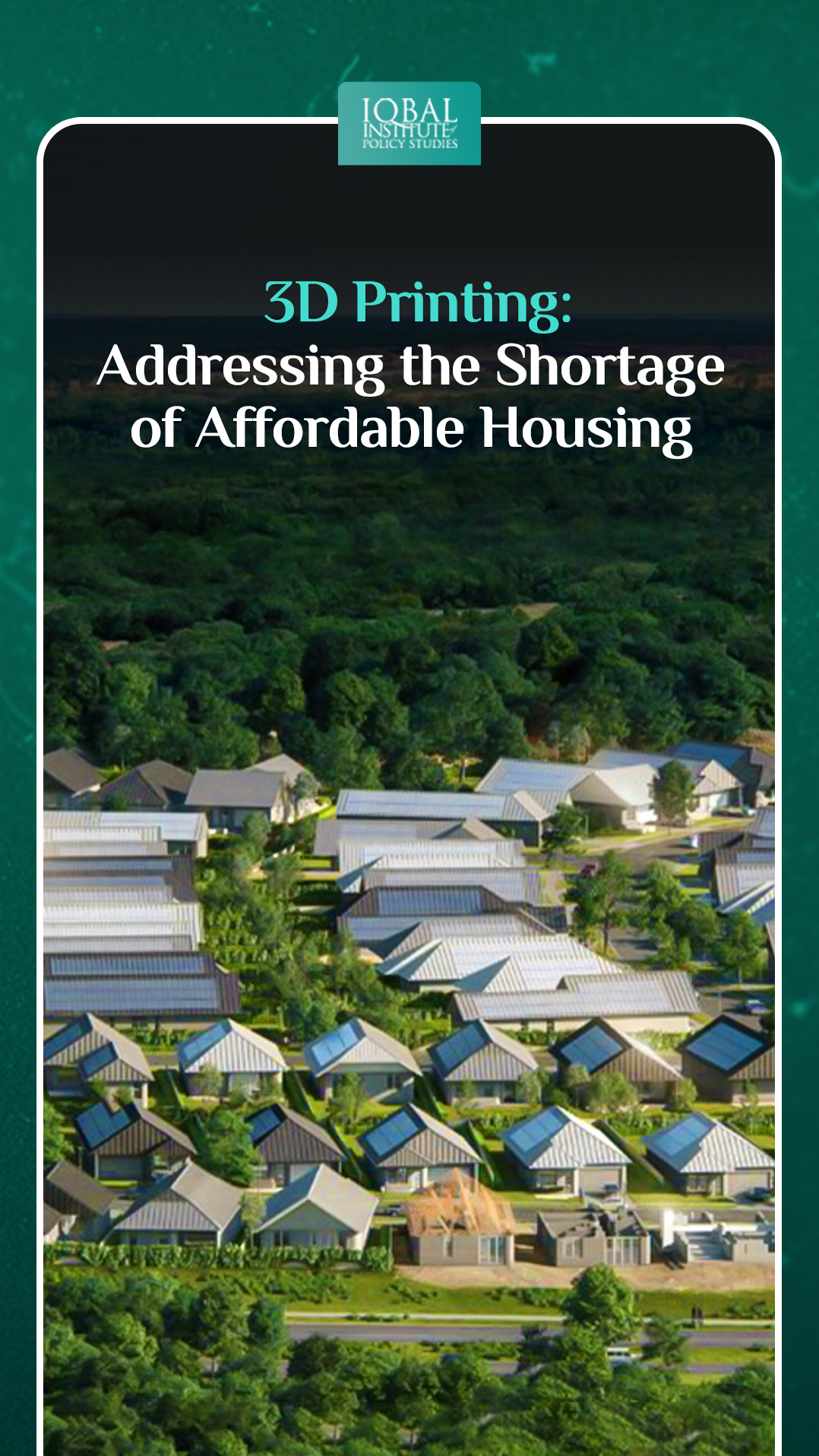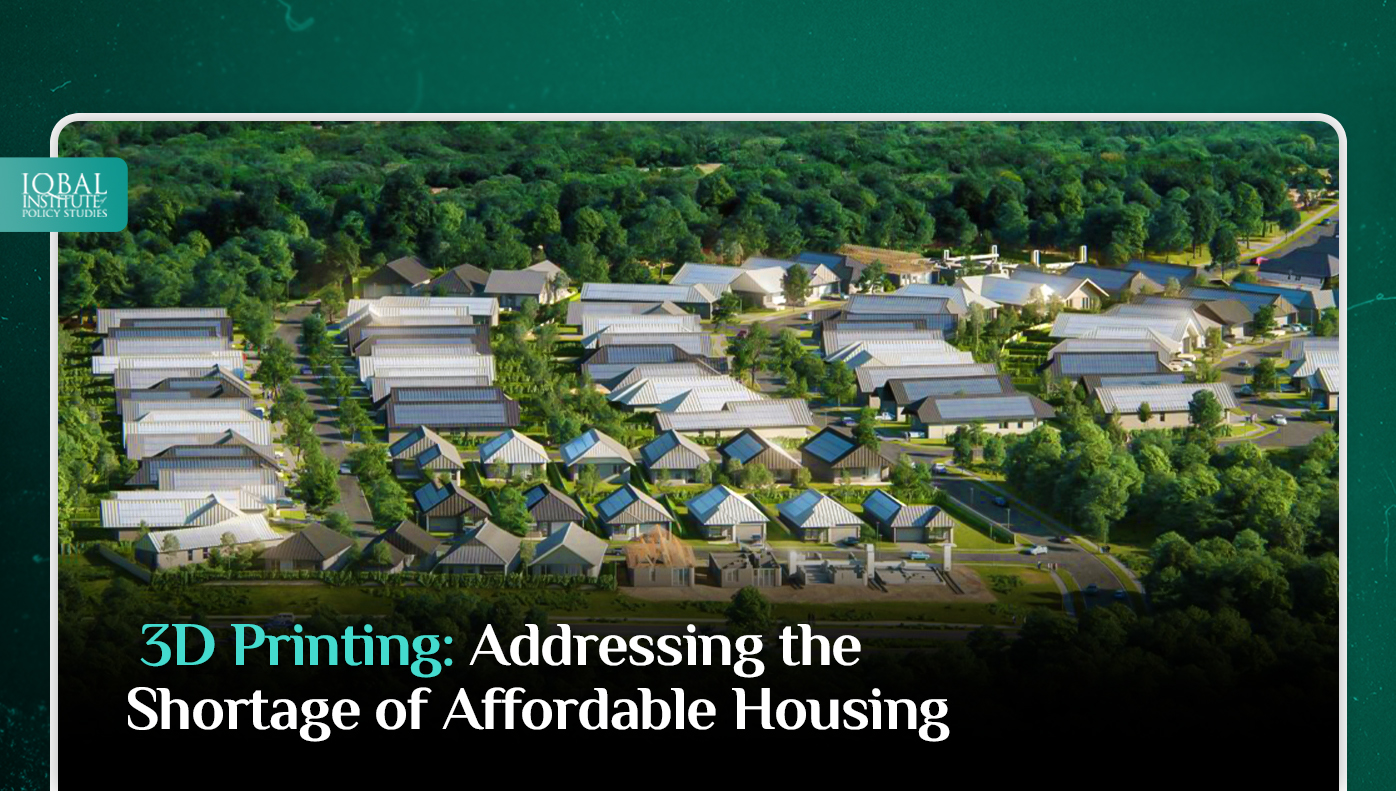Technology has played a crucial role in shaping and revolutionising the housing sector. However, with the increasing global housing demands, the need for new housing technologies has grown more than ever. Thus, innovative building technologies like 3D printing are becoming mainstream among developers and emerging as a promising means of solving mankind’s most pressing issues of housing affordability and shortage. By 2030, 3 billion people will need to build 96,000 homes every day (Fleming, 2021). To curb this issue, 3D printing provides productive solutions by building cost-effective and efficient homes more quickly than traditional buildings. If adopted at a large scale, this technology can provide affordable housing to millions of people in a short span. Moreover, 3D printing technology has the potential to foster environmentally sustainable and healthier urban living and address the current and future acute housing shortage and affordability crisis. As a result, it is gaining momentum in multiple countries. Hence, this new technology has charged up the perspectives of affordable housing advocates around the world who see building innovative and resilient housing rapidly and at low costs as a game changer.
What is 3D printing Technology?
3-D printing technology builds anything with a three-dimensional shape. This modern technology brings production closer to consumers and enables faster and cheaper production of homes. This technology is making revolutions in terms of eco-friendly and sustainable building solutions.
Benefits of 3D Printing Technology in the Housing Sector
Cost-Effective
3D-printed homes can provide affordable homes compared to traditionally constructed homes. This can accommodate low-income individuals who cannot afford standard housing in rapidly urbanising cities and are forced to live in squatter settlements. Building a home through traditional means costs about US $25000 (Ijjasz-Vasquez & Grandolini, 2016). However, 3D printing technology lowers construction costs by 35% due to increased building efficiency (Bergh, Nieuw, Slob, Suarez, & Velema, 2022).
Expandable and Malleable
Houses built through 3D printing technology are constructed in the form of independent units called modules, and more modules can be added to create more space depending on the requirement. Moreover, these modules are 3D printed separately and assembled on-site. The modules can be reassembled as well to create different rooms. This becomes effective in relocating informal residents or providing housing to disaster-affected people.
Flexibility
Since these houses are easy to move and can be transported to a new site, the capacity to relocate a house makes its structure flexible during natural hazards. This also makes the construction sustainable, and recyclable.
Climate Resilient
Concrete is currently responsible for 8% of global greenhouse gas emissions (Bergh, Nieuw, Slob, Suarez, & Velema, 2022). However, 3D printing can reduce carbon emissions by up to 50% and reduce waste by up to 90% making it highly sustainable and environment-friendly (Elstad, 2022). Moreover, houses built with 3D printing technology can withstand droughts, floods, and fires as well.
Time-saving
This technology can construct homes within a short period, thus reducing labour and construction costs. For example, A company known as 14trees 3D printed a house in just 12 hours at the cost of under $10,000 in Kenya and Malawi (World Economic Forum, 2021). Whereas, it takes 7 months on average to build a house traditionally according to a 2019 US Census Bureau Report (Ramsey Solutions, 2022).
How Countries Around the world are Benefitting from 3D Printing technology?
Providing adequate and affordable housing is a growing challenge in countries across the world. Therefore, 3D-printed houses are adopted on a large scale to provide affordable and resilient housing to the growing population. Africa for instance has been experiencing rapid urbanisation, where 40,000 people relocate to one of its urban cities daily (Fleming, 2021). Therefore, African Government is availing this innovative technology to build inexpensive and efficient homes for its massive population. This technique was also used in Chennai India, where a single-story home was built with 3D-printed technology in just 5 days. The finished building was estimated to be 30% cheaper and also generated less waste in the process (World Economic Forum , 2021). Moreover, this approach has been adopted for niche projects as well such as the world’s first 3D-printed bridge opened to the public in Madrid in 2016 (World Economic Forum, 2021). Hence, 3D printing technology has great potential to boost the affordable housing sector and it is slowly becoming mainstream worldwide. Where government incentives and policies fail to provide affordable housing, this technology can become the solution to this global problem.
Why Pakistan Should Adopt 3D Printing Technology in its Housing Sector?
There is a high demand for affordable and accessible housing in Pakistan, which has a population of over 200 million people and is one of the most populous countries in South Asia (The World Bank, 2022). Pakistan faces an acute housing shortage leading to a housing crisis all across the country. For example, Punjab province had a housing gap of 2.3 million units in 2017 and is expected to skyrocket to 11.3 million units by 2047 (Zaheer, Arshad, & Kwak, 2022). Moreover, this country is prone to radical climate changes and recently suffered a loss of more than 2 million houses, affecting over 33 million people due to floods (The World Bank, 2022). Also, the housing supply and demand chain have many weak links, widening its gap. For example, the urban housing demand in Pakistan is 350,000 units per year. The formal supply per year is 150,000 units. The unmet demand is taken care of by the creation of informal settlements. Thus, there is an 8.5 million unit backlog of housing in the country which is growing by 200,000 per year (Hassan & Arif, 2018).
To address all these issues, 3D printing technology can provide an effective solution. Low construction costs, time-saving and flexible qualities can provide a large number of houses instantly for the massive population. Moreover, the easiness of relocating these houses can be used to relocate informal settlements from urban centres or disaster-prone areas. This technology in the housing sector will contribute to addressing housing needs, particularly for low-income households, by leveraging the private sector. It will also strengthen property rights and increase the supply of climate-resilient, affordable housing developments. Therefore, the government must avail this technology and encourage its adaption in the housing sector by formulating effective and creative reforms and policies. This step will not only lessen the housing affordability crisis in the country but will also prove beneficial for the economy in the long run.
Conclusion
The world suffers from a lack of housing. However, technologies like 3D printing ensure innovative, significantly faster, and more economical approaches to construction. This technology can create homes by using less material and producing minimum waste. Thus, it can be used to provide adequate and affordable housing for low-income individuals while maintaining sustainability and a stable environment. In conclusion, the future is of clean technology, therefore, economies must incorporate technologies like 3D printing into their industries to curb socioeconomic issues and gain maximum economic productivity and growth.
References
Bergh, J. v., Nieuw, C., Slob, W., Suarez, M. E., & Velema, P. L. (2022, May). Modular 3D printing construction: towards affordable, adjustable and climateresilient housing. Science-Policy Brief for the Multistakeholder Forum on Science, Technology and Innovation for the SDGs. Retrieved from https://sdgs.un.org/sites/default/files/2022-05/2.4.4-14-van%20den%20Bergh%20-Modular%203D%20printing%20construction.pdf
Elstad, S. (2022, October 6). Greener ideal. Retrieved from https://greenerideal.com/news/technology/how-3d-printing-is-saving-our-planet/
Fleming, S. (2021, May 10). World Economic Forum. Retrieved from https://www.weforum.org/agenda/2021/05/countries-3d-printing-new-homes
Hassan, A., & Arif, H. (2018, August 19). DAWN. Retrieved from https://www.dawn.com/news/1427893
Ijjasz-Vasquez, E., & Grandolini, G. M. (2016, May 25). World Bank. Retrieved from https://blogs.worldbank.org/voices/3-reasons-why-housing-all-can-happen-2030#:~:text=We%20will%20need%20300%20million,US%24525%20billion%20per%20year.
Ramsey Solutions. (2022, January 17). Ramsey. Retrieved from https://www.ramseysolutions.com/real-estate/how-long-does-it-take-to-build-a-house#:~:text=On%20average%2C%20it%20takes%20seven,2019%20U.S.%20Census%20Bureau%20report.&text=But%20you%20may%20also%20need,(1%E2%80%934%20months).&text=Then%20tack%20on%20anot
The World Bank. (2022, March 10). Retrieved from https://www.worldbank.org/en/news/press-release/2022/03/10/world-bank-supports-pakistan-to-improve-property-rights-and-increase-access-to-affordable-housing-and-mortgage-finance-f
The World Bank. (2022). Retrieved from https://www.worldbank.org/en/country/pakistan/overview
World Economic Forum . (2021, May 10). Retrieved from https://www.weforum.org/agenda/2021/05/countries-3d-printing-new-homes
World Economic Forum. (2021, June 30). Retrieved from https://www.weforum.org/agenda/2021/06/3d-printed-home-african-urbanization/
World Economic Forum. (2021, Feburary 25). Retrieved from https://www.weforum.org/agenda/2021/02/3d-printed-homes-affordable-housing-homelessness-united-state
Zaheer, N., Arshad, S., & Kwak, D. (2022, March 11). World Bank Blogs. Retrieved from https://blogs.worldbank.org/endpovertyinsouthasia/managing-supply-and-demand-key-getting-housing-right-pakistan



Leave a Reply